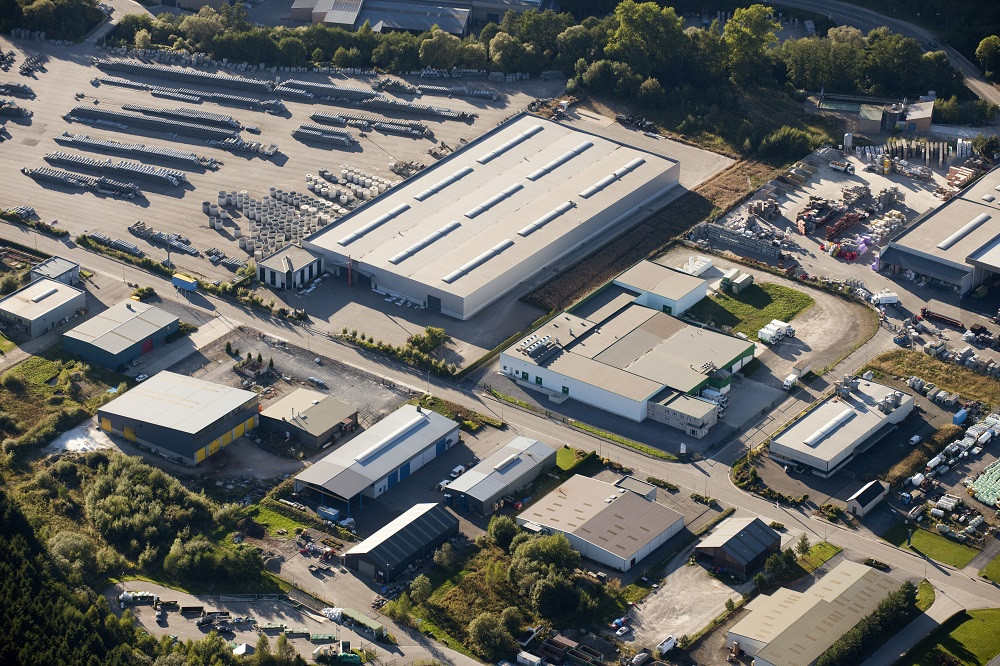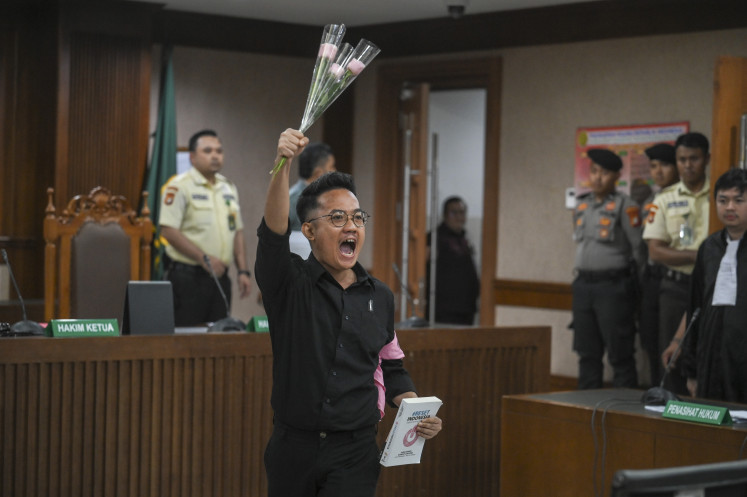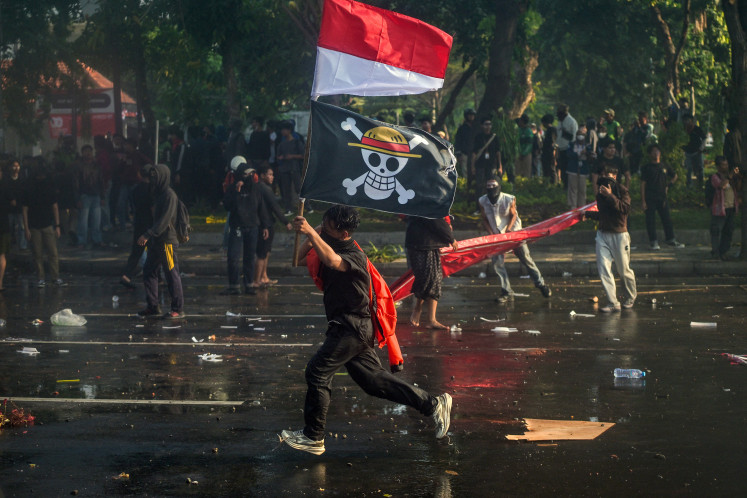Popular Reads
Top Results
Can't find what you're looking for?
View all search resultsPopular Reads
Top Results
Can't find what you're looking for?
View all search resultsTracking and unlocking EE potential in Indonesian industrial sector
Most EE innovations in industry are still self-funded, and the COVID-19 epidemic has dramatically reduced investment.
Change text size
Gift Premium Articles
to Anyone
T
he industrial sector has been a key driver of the growth in Indonesia energy demand. The largest industry sub-sectors in Indonesia contributing to total energy consumption are machinery and transportation equipment, followed by food, beverages and tobacco.
According to the Energy and Mineral Resources Ministry’s energy outlook for 2019, the manufacturing and transportation sectors are increasing at an average annual growth rate of 5 percent and projected to account for 42 percent of total energy consumption by 2050, mainly dominated by coal, gas and oil.
Given the incremental energy demand, the implementation of energy efficiency (EE) measures is crucial to address the energy challenge and may even cut costs for building new power plants. According to the 5th ASEAN Centre for Energy (ACE) energy outlook, in the absence of enhanced EE, between 2015 and 2040, total primary energy supply (TPES) will more than double in Indonesia. Against the background of the energy demand challenge, more EE policies and technology should be adopted to extract the energy-saving potential.
Although the utilization of EE technologies in the industrial sector can provide a huge benefit to both the greenhouse gas emissions-reduction target and EE target of Indonesia, the deployment of high EE potential technologies in Indonesia’s industry is hindered by several factors, with missing upfront financial support as the leading one. Also, in many cases, information, awareness and regulatory barriers are continuing to prevent enterprises from fully realizing the potential opportunities offered by improving EE in industry.
An ACE consultation with technology providers in 2020 showed that most EE innovations in industry are still self-funded, and the COVID-19 epidemic has dramatically reduced investment. Besides, in several cases, technology providers offer project finance solutions as a strategy to gain industry approval to carry out EE projects, including supplier credit and project management models. However, energy-saving technology providers often find that industry managers and policymakers are not yet aware of EE opportunities that prevent the realization of EE projects.
Tracking the potential of EE measures to be improved is also critical. An investment-grade audit is a detailed account of energy use and the associated analysis of costs and savings related to an EE project. Emerging best practices in Indonesia suggest that this audit also includes financial strategy, which is calculated based on capital expenditure and future cost-saving. In all EE projects, a detailed account of energy use both before and after the installation of EE measures is essential to assess potential energy and cost savings that the project aims to realize. These baselines are important, as it is on these estimates that the future costs and savings can be calculated for the bankability of the project.
A decomposition analysis of energy flow in Indonesia’s manufacturing industries shows that that heating systems such as boiler and steam systems consume the largest amount of total energy and motor-driven machinery, such as pumps, compressors and fans, consumes the largest amount of electricity, thus becoming a vital point on energy audits.
To date, there have been several policies issued by the energy ministry, also through a presidential decree, which aim to improve industry’s EE. Through these regulations, industry players with a total final energy consumption (TFEC) value of more than 6,000 tons of oil equivalent/year are obliged to implement an EE program.
In general, the government provides tax exemptions, fiscal incentives for the import of energy-saving equipment, several non-fiscal incentives (ISO management, investment-grade audit, capacity building) and low-interest rates for investment in EE programs for industry players who are willing to implement an EE program.
However, ACE’s consultation with financial institutions showed that the prevailing fiscal policies are still unfavorable to private investment in end-use efficiency.
The Financial Services Authority (OJK) has also been supporting the development of sustainable financing in Indonesia. Support is seen in published regulations where banks are required to apply sustainable financing principles and to provide loans for green projects, which include EE programs. Besides, at least 70 percent of the funding from a public offering of green bonds must also be used for sustainable projects.
Several market instruments are currently emerging in Indonesia to address specific barriers to EE finance such as direct equity, bank loans and leasing. However, the data show that they still lack guidance and expertise to feel comfortable in investing in EE projects.
To build a more conducive environment for EE investment, several improvements are needed on the technical, policy and financing aspects. First, capacity building for industry players, financial institutions and the government is needed to improve knowledge on building a bankable EE program and pilot projects on successful EE implementation. Next, it is crucial to strengthen law enforcement on EE measures to ensure that issued policies are implemented accordingly.
Energy management policy may also be improved by setting a lower threshold on the minimum energy consumption of industry for mandatory EE measures and to increase fiscal and non-fiscal incentives in promoting EE measures.
Lastly, collaboration with the development banks/international funds can also play a crucial role in providing credit guarantees to first movers — especially to the banks who will be willing to take on the risks of early investment in EE. Such guarantees are particularly important given that the bankability of an EE project needs to be based on future energy services and associated cash flows rather than on the value of the asset or collateral in question.
***
Both writers are researchers at the ASEAN Centre for Energy. The views expressed are personal.









